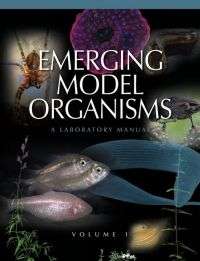A new world of research possibilities with 'Emerging Model Organisms'

How can moss help us to treat Alzheimer's disease? What can the lamprey immune system tell us about evolution? Can genetic studies of snapdragon populations help with efforts to conserve rare species? What can quail teach us about human aging, reproduction, and hereditary diseases? Will studies of choanoflagellates unravel the origins of animals?
To answer these and other questions in biology, scientists are increasing the array of experimental model organisms. These novel species—some relatively new to the laboratory and others undergoing a recent expansion—are the focus of Emerging Model Organisms, a new laboratory manual just released by Cold Spring Harbor Laboratory Press.
Emerging Model Organisms is a catalog of diverse species that will be useful for extending research in new directions. In this volume, leading experts provide chapters on 23 emerging model systems, ranging from bat and butterfly to cave fish and choanoflagellates, and from cricket and finch to quail, snail, and tomato.
Until recently, a small number of organisms—such as E. coli, fruit fly, Arabidopsis, C. elegans, and mouse—have been the primary focus of research in molecular, cellular, and developmental biology. But in the last few years, due in part to technical advances, the reduced costs of genome sequencing, and increased interest in evolution, the range of organisms used for research has greatly expanded. Emerging Model Organisms introduces the reader to this new generation of model organisms that provide opportunities to address new and unusual questions in biology, especially in the areas of evolution and development.
Each chapter includes a detailed explanation of why the system is useful for research, along with information on care and culture of the organism, its genetics and genomics, and a set of basic protocols for working with it in the laboratory. The book is geared towards research scientists at all levels—from graduate students to principal investigators.
For a complete table of contents and list of species in Emerging Model Organisms, Volume 1, see www.cshlpress.com/link/emop.htm. Subsequent releases of the Emerging Model Organisms series, already in preparation, will focus on additional species. Emerging Model Organisms is also available online from the methods journal Cold Spring Harbor Protocols (www.cshprotocols.org/emo).
Source: Cold Spring Harbor Laboratory















